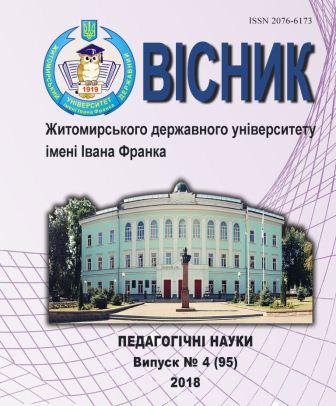Родинно- та суспільно-побутові пісні Східного Поділля як засіб формування самосвідомості особистості
DOI:
https://doi.org/10.35433/pedagogy.4(95).2018.208-212Keywords:
Східне Поділля, фольклор, народна пісня, мелодика, формотворення, особистість, самосвідомістьAbstract
У статті розглянуто особливості побутування українських народних пісень родинно- та соціальнопобутового жанру на локальній території Східного Поділля. Визначено значення та вплив народних пісень означеного жанру на формування самосвідомості сучасної молоді. Проаналізовано особливості формотворення, а також здійснено музично-теоретичний аналіз пісенних зразків досліджуваного жанру, що побутують та території Східного Поділля України.References
Леся Українка Твори / Леся Українка. – В 5 т. – К. : Наук. думка, 1654. – Т. 4. – 450 с.
Іваницький А. Українська музична фольклористика : Методологія і методика / А. Іваницький. – К. : Заповіт, 1997. – 392 с.
Грица С. В ім’я збереження фольклору / С. Грица // Вибрані статті. Фольклор у просторі та часі. – Тернопіль : Астон, 2000. – 228 с.
Франко І. Студії українськими народними піснями / Упорядк. М. Т. Яценка. – Твори у 50 т. – К. : Наук. думка, 1980. – Т. 42. – С. 480
Квітка К. Вибрані статті : У 2 ч. (упоряд. та коментар А. І. Іваницького) / К. Квітка. – Ч. 1. – К. : Муз. Україна, 1986. – 138 c.
Колесса Ф. Музикознавчі праці / Підгот. С. Грица. – К. : Наук. думка, 1970. – 591 с.
Downloads
Issue
Section
License
Copyright (c) 2019 А. І. Сторожук

This work is licensed under a Creative Commons Attribution-NonCommercial-NoDerivatives 4.0 International License.
Authors published in this journal agree to the following terms:
a) The authors reserve the right to author their work and grant the journal the right to first publish this work under the Creative Commons Attribution License, which allows others to freely distribute the published work with a mandatory link to the authors of the original work and the first publication of the work therein magazine.
b) Authors have the right to enter into separate additional agreements regarding the non-exclusive distribution of the work in the form in which it was published by this journal (for example, posting work in an electronic repository of the institution or publishing as part of a monograph), provided that the reference to the first publication of the work is maintained therein. magazine.
c) Journal policy permits and encourages the submission of manuscripts by the authors on the Internet (for example, in repositories of institutions or on personal websites), both prior to submitting this manuscript to the editorial board and as it contributes to the emergence of productive scientific discussion, and has a positive impact on the promptness and dynamics of citing a published work (see The Effect of Open Access).


 ISSN
ISSN 





